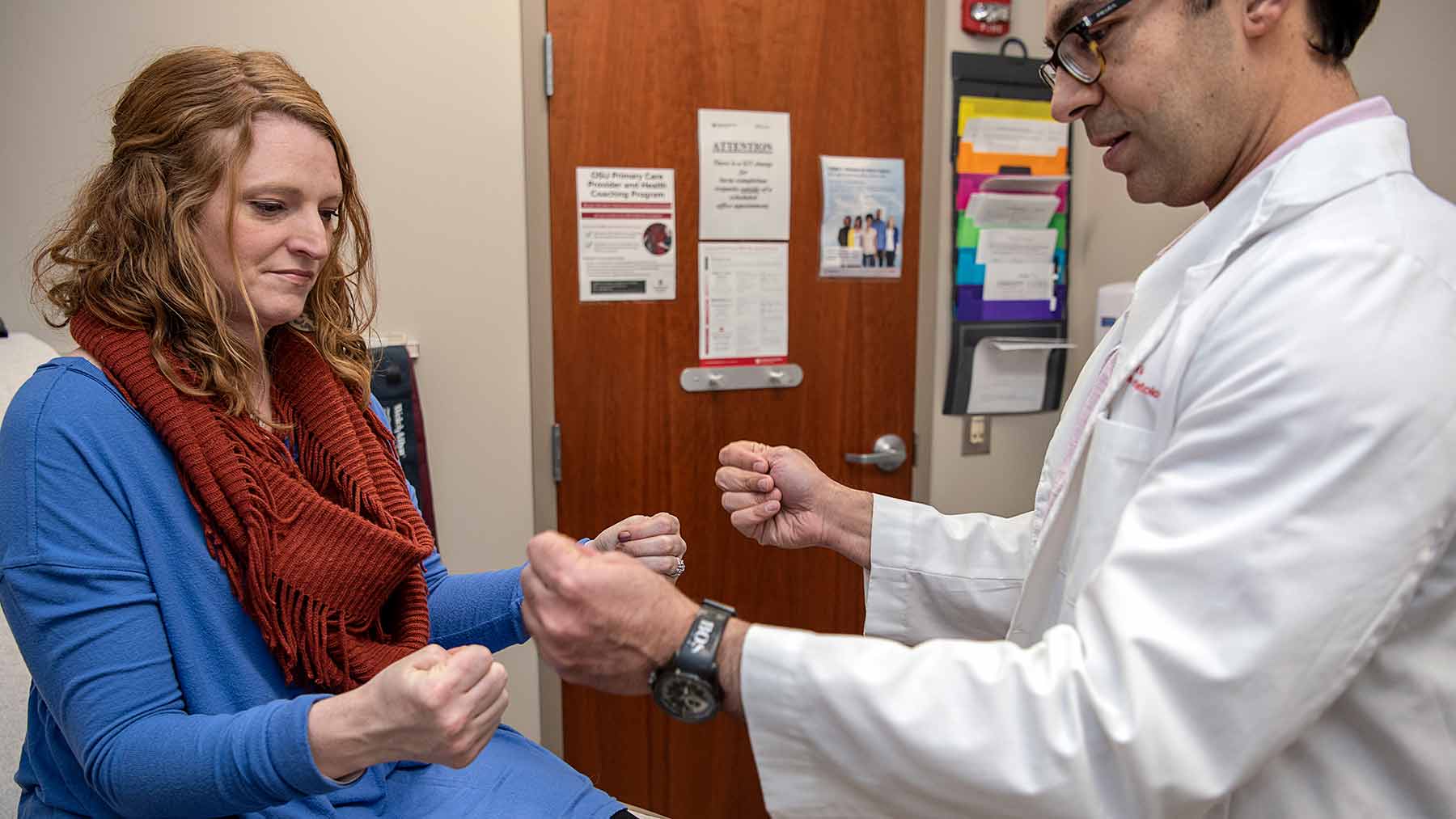What is lupus?

Lupus is an autoimmune rheumatic condition that causes the immune system to start working against different parts of the body, including joints and organ systems. It tends to cause increased inflammation in the body.
It’s an intriguing and challenging condition because of how it varies—not only from person to person, but also day to day.
Medicine is typically pretty black or white, but when it comes to autoimmune diseases like lupus, there’s a gray zone of relative uncertainty. Lupus can present on a spectrum, and can manifest in a number of different ways, occasionally mimicking other conditions.
It can be unpredictable, and the majority of sufferers still aren’t equipped with adequate knowledge of the condition and some of its ramifications.
Who’s most at risk for developing lupus and why?
Lupus affects women more often than men. Women generally tend to be more frequently affected by autoimmune disease, with at least three out of four people diagnosed with autoimmune disease being women.
African Americans are affected by lupus more often, as well as Hispanics, and it’s believed that genetics play a role. Hormones also play a role, as women are affected typically during childbearing age when estrogen levels are high.
How is lupus diagnosed?
Blood testing is used in diagnosing lupus, but blood testing itself isn’t sufficient to make the diagnosis. The clinical signs and symptoms are extremely pertinent.
The initial “screening” test is the antinuclear antibody (ANA) test. The likelihood of having lupus is minimal if this test is negative. After the initial ANA test, more specific antibodies will be checked.
The lab testing, along with clinical signs and symptoms, help in making the diagnosis, along with relevant imaging.
What are the symptoms?
The symptoms primarily include joint pain, muscle aches, fatigue, skin rash, low-grade fevers, photosensitivity (you feel poorly in the sun, mouth ulcers, Raynaud’s disease (a rare disorder of the blood vessels, usually in your fingers and toes) and hair thinning/alopecia.
It’s important to know that not everyone with lupus experiences all these symptoms, and the severity and frequency of these symptoms varies for each patient.
Lupus can be systemic, affecting the entire body. Other subsets of lupus are cutaneous and affect the skin, including discoid and subacute cutaneous, as well as acute cutaneous lupus.
What causes lupus?
There’s no one factor that causes lupus. Rather, it’s a constellation of factors, including genetics, hormones and environmental triggers, such as an infection or an emotional or a physical stressor. Certain drugs can cause lupus as well.
What is a lupus flare?
A flare is generally when someone who has lupus is feeling ill. It can entail a few days of fever, joint pain, swelling, rash, fatigue, abdominal pain, muscle aches or mouth ulcers. A flare is when these symptoms intensify and cause more discomfort than normal.
The frequency of flare-ups is highly variable. Some people can go years without having any flares. Lupus can be in remission, and people aren’t affected by it on a routine basis and function pretty much normally.
How is lupus treated?
There are many ways to treat lupus. Medications run the gamut from anti-inflammatory medications to immunosuppressant and immunomodulatory medications.
Joint pain and muscle pain can be managed by taking appropriate analgesics, muscle relaxants and anti-inflammatory meds. Dry eyes and dry mouth can be treated with eye drops, sugar-free lozenges and gentle mouthwash.
Sun protection is key, since the sun can trigger lupus symptoms. Using a physical sunblock is preferable, along with wearing a hat and sun-protective clothing when outside. UV light, and even indoor fluorescent light, can induce flare-up of systemic as well as cutaneous (skin) lupus.
Nutrition and movement play an important role. Lupus is an inflammatory disease, and inflammation in general can be dictated by what you’re consuming food wise.
Inflammation also responds pretty well to moving and being active. Obviously, you need to rest when there’s extreme fatigue, and it’s important to listen to your body and get enough sleep.
Lupus flare can easily be triggered by stress, so it’s important to have ways to alleviate your stress. Yoga, meditation, lifting weights and massage therapy can be very useful. Stay well hydrated and get enough refreshing sleep.
How does lupus affect pregnancy?
Lupus can affect pregnancy in a number of ways, which is why it’s important to discuss the viability of a pregnancy with your rheumatologist before you get pregnant.
If you have an active lupus disease state, you have a higher risk of complications during pregnancy, including flare-ups and preeclampsia, as well as increased risk of preterm birth or fetal loss.
Other complicating factors during pregnancy include treatment options, as many drugs can’t be taken during pregnancy, which can increase risks for the disease to flare-up further.
When should you seek medical treatment for lupus?
As soon as you’re diagnosed, having a rheumatologist as part of your medical treatment team is key.
Lupus requires a strong partnership between patient and rheumatologist. Lupus is a lifelong condition, and you need someone to guide you through both the peaks and valleys in dealing with the disease.
A rheumatologist can discuss the various aspects of lupus, including what to look for when it comes to disease activity and flare-ups, along with preventive and management aspects of the disease.
Your rheumatologist can refer you to other specialists as needed, depending on whether any other organ systems, such as the kidneys, are involved.
The vast majority of people with lupus can expect to live a normal life span. But it’s important to speak out, and have a confidante in your rheumatologist who won’t only diagnose and treat your lupus, but will also listen to you.
Ali Ajam is a rheumatologist at The Ohio State University Wexner Medical Center.




